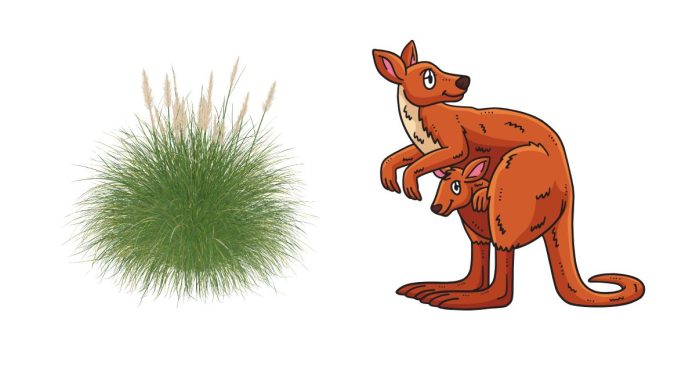The red kangaroo (Macropus rufus), an iconic symbol of Australia, is not only the largest marsupial in the world but also an herbivore with a diet perfectly suited to its arid and semi-arid habitat. Let’s explore what fuels these fascinating creatures.
Primary Diet of the Red Kangaroo
Red kangaroos are primarily grazers, and their diet consists of a variety of plant materials, including:
- Grasses
Grasses are the main component of their diet. They prefer fresh, green grasses but can also consume dry and tough varieties, which are abundant in the Australian outback. - Forbs
Forbs, which are herbaceous flowering plants other than grasses, form another significant part of their diet. These plants provide essential nutrients and help supplement their grass-based diet. - Shrubs and Leaves
During times of drought or scarcity, red kangaroos adapt by eating leaves and shrubs. This adaptability allows them to survive in challenging environments. - Succulent Plants
Succulent plants are an important water source for red kangaroos, especially in arid areas where water is scarce. These plants help them stay hydrated.
Adaptations for Feeding
Red kangaroos have unique adaptations that help them thrive in their environment:
- Efficient Digestion: Their specialized stomach allows for fermentation, which helps them extract the maximum nutrients from fibrous and low-quality vegetation.
- Conservation of Water: They require very little water to survive and can go long periods without drinking, relying on moisture from their food.
Feeding Behavior
Red kangaroos are primarily nocturnal feeders, meaning they forage during the night or early morning when temperatures are cooler. This behavior helps them conserve energy and avoid dehydration in the harsh Australian climate.
The red kangaroo’s diet reflects its resilience and adaptability to Australia’s challenging environment. By consuming grasses, forbs, shrubs, and succulents, these marsupials maintain their health and energy in even the driest conditions. Observing the red kangaroo’s eating habits is not only a window into their survival strategies but also a testament to the diversity of life in Australia’s ecosystems.


